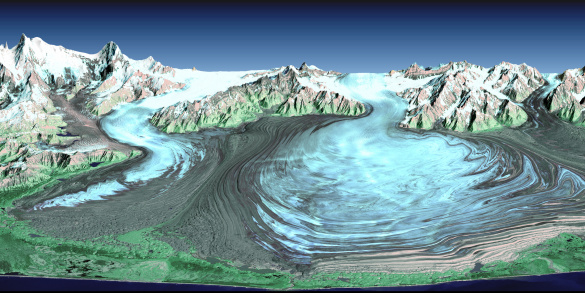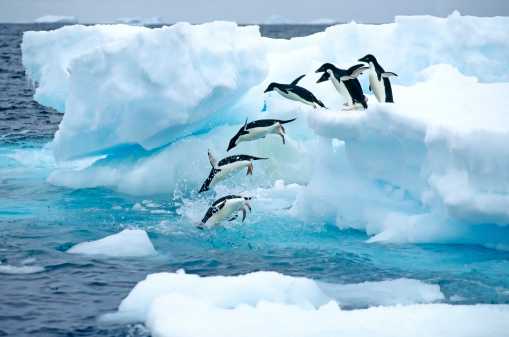Rivers of Ice
"Ah, think of the possibilities," said Ron dreamily. "It would've been so easy to push Malfoy off a glacier and make it look like an accident... Shame his mother likes him..."

To make Ron's dream a reality, it took many many years of snow accumulation and compression. The snow has to remain in one area long enough to turn into ice. Glaciers are able to flow like huge rivers of ice, albeit the movement can be as slow as a few centimeters a year.
Glaciers are located on almost every continent. Any mountain that is higher than the snow line can be the home of a glacier. The snow line occurs at different altitudes in different parts of the world. Naturally, most glaciers are found in cold climates, much like Durmstrang's location. The majority of the glaciers on Earth are found in Antarctica or Greenland.

Due to the lay of the land, there are also different types of glaciers. In Antarctica, glaciers are huge sheets of ice. Miniature ice sheets are called ice caps. When ice sheets extend and float over the ocean, they are called ice shelves. Glaciers can be seen on mountains and in valleys. Tidewater glaciers are valley glaciers that reach the sea and calve into icebergs. The unique and beautiful piedmont glacier occurs when a steep valley glacier spills into a flat plain. Hanging glaciers or ice aprons are found on steep mountainsides, often causing avalanches in the Alps.
 Glacial erosion leads to interesting landforms. Cirques are bowl-like formations that occur in the mountains. They typically fill with water and become lakes. There can be many cirques in a row. The sharp peaks associated with mountaintops are shaped by glaciers, including aretes and horns, such as the famous Matterhorn in Switzerland. Kettle lakes form when pieces of ice break off and become buried under the glacial till.
Glacial erosion leads to interesting landforms. Cirques are bowl-like formations that occur in the mountains. They typically fill with water and become lakes. There can be many cirques in a row. The sharp peaks associated with mountaintops are shaped by glaciers, including aretes and horns, such as the famous Matterhorn in Switzerland. Kettle lakes form when pieces of ice break off and become buried under the glacial till.
Even though they move slowly, glaciers can move large amounts of material. Till is composed of gravel, rocks, sand, and mud. It is a good choice for farmland. Moraines are deposited as a glacier moves. They are long narrow ridges, which are usually washed away by glacial meltwater. Glaciers sometimes move huge rocks and transport them. These are called erratic boulders, because they clearly do not belong where they are moved. Drumlins are teardrop-shaped deposits left by a glacier.
 Besides providing breathtaking views, glaciers store about 75% of the world's freshwater. They provide drinking water and irrigate crops. Since glaciers do take a long time to move, they also serve as a natural record of climate change. So, pushing Malfoy off a glacier seems like a good plan... Unless Malfoy is part penguin.
Besides providing breathtaking views, glaciers store about 75% of the world's freshwater. They provide drinking water and irrigate crops. Since glaciers do take a long time to move, they also serve as a natural record of climate change. So, pushing Malfoy off a glacier seems like a good plan... Unless Malfoy is part penguin.
Source:
http://nsidc.org/cryosphere/glaciers/information.html






